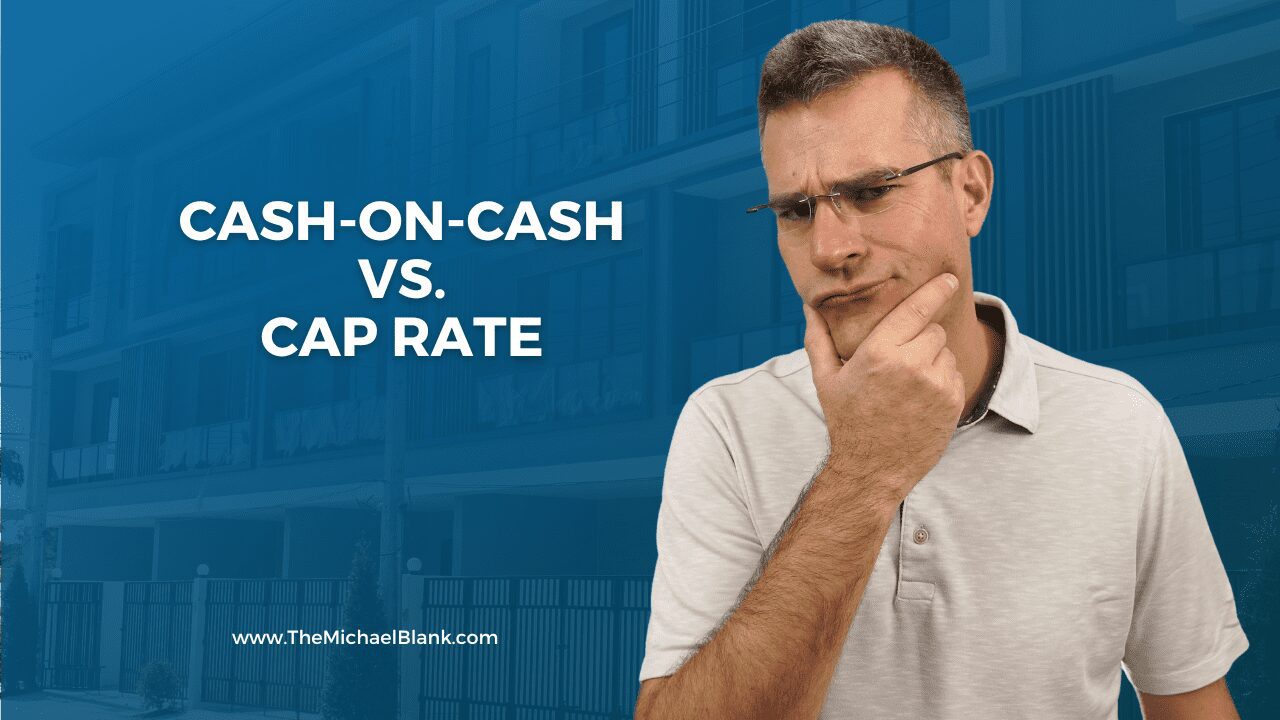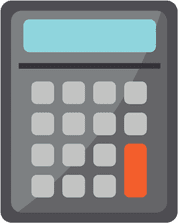Make sure you download ALL my resources for FREE at this link: https://themichaelblank.com/vault
You know that we believe, all roads lead to multifamily.
It seems that no matter how you get your start in real estate, the vast majority of investors come to the same conclusion: For passive, everlasting cashflow, multifamily is the way to go.
Investing in real estate is a safer bet, especially in a volatile market and uncertain times, but not all rental property is the same and in order to invest in real estate successfully, you need tools.
There are a few important metrics we use to analyze potential deals that you should know about. Two of these are cash-on-cash rate and cap rate.
What are these formulas, and what’s the difference between the two?
Cash on Cash Vs. Cap Rate
The cap rate, which is short of capitalization rate, is a formula we use to compare the potential returns to the market value of a property.
This formula is basically this:
Capitalization rate = Net operating income / Market value
The cap rate shows you, as an investor, what you can expect to receive in annual returns.
And this number is expressed as a percentage.
Visualize it like this…if you have one box worth a million dollars and there’s a box just like next door, but it’s valued at 1.5 million, the box on the right is more on the right is producing more income than the box on the left.
Our strategy is to look for the boxes on the left that are valued at a million dollars, fix them up, and make them produce income like the boxes on the right.
What is a good cap rate?
That depends.
If you’re selling a property, then a lower cap rate would mean the sale price of the property would be higher. If you’re buying a property, a higher cap rate might mean a better deal.
Cap rates vary from market to market and are affecting by a variety of factors including the age and condition of the building, the location, amenities, the demands of the market, and job growth in the area.
Cash-on-Cash is a formula investors use to measure how quickly the amount of cash invested in a property will be returned.
This number is also expressed as a percentage, the higher the percentage meaning the quicker the return on investment.
The cash-on-cash formula compares the net cash generated after paying normal operating expenses – including the mortgage — to the amount of cash invested in the property.
And this formula can also be used to determine how much cash you need to invest in order to achieve a targeted return, and how to obtain a specific before-tax cash flow.
What is a good cash-on-cash return?
These can be complex calculations, and as it is with cap rate, there’s not firm answer to this question as it varies from investor to investor.
Don't let the math trip you up.
Basically, cap rate compares the net operating income a rental property generates to the purchase price of the property, and it provides an apples-to-apples comparison of similar properties in the same market.
The return (or cap rate) of a specific property is the same for every investor, while cash-on-cash measures the potential profit an investor can expect to make on total cash invested. The same investment property can have different cash-on-cash returns based on different amounts of leverage.
Remember, there’s no right or wrong answer to “What is a good cap rate?” or “What is a good cash-on-cash return?”. The answer really depends on each investor’s unique goals and investment strategy.
These indicators are extremely valuable, but you want to be careful not to oversimplify the process of accurately evaluating apartment building deals, especially when they are “value-add” deals.
We tend to look for value-add deals because that's how we can build the most wealth in the shortest period of time.

